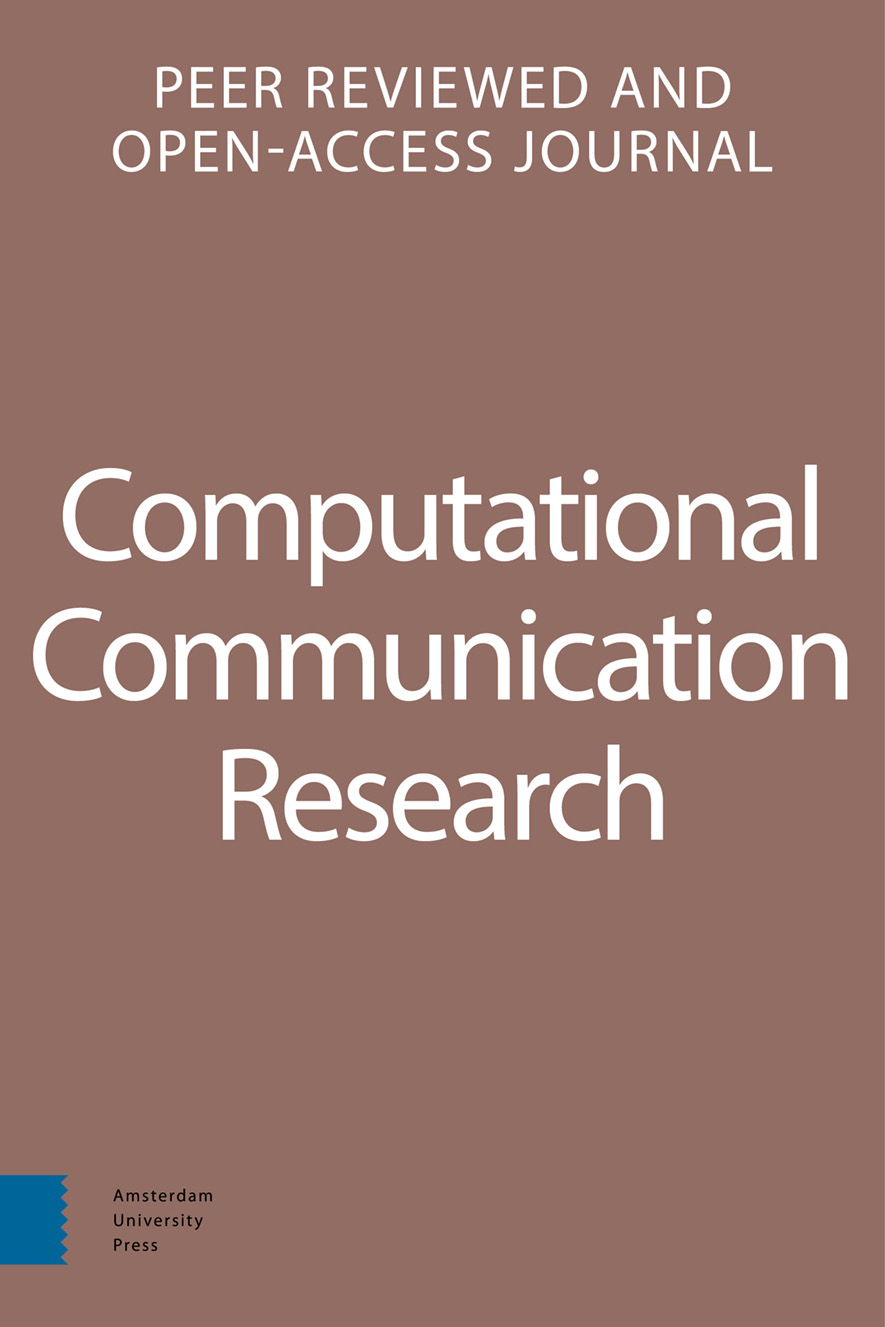- Home
- A-Z Publications
- Computational Communication Research
- Previous Issues
- Volume 3, Issue 2, 2021
Computational Communication Research - Volume 3, Issue 2, 2021
Volume 3, Issue 2, 2021
-
-
Toward a Stronger Theoretical Grounding of Computational Communication Science
More LessAbstractComputational communication science (CCS) is embraced by many as a fruitful methodological approach to studying communication in the digital era. However, theoretical advances have not been considered equally important in CCS. Specifically, we observe an emphasis on mid-range and micro theories that misses a larger discussion on how macro-theoretical frameworks can serve CCS scholarship. With this article, we aim to stimulate such a discussion. Although macro frameworks might not point directly to specific questions and hypotheses, they shape our research through influencing which kinds of questions we ask, which kinds of hypotheses we formulate, and which methods we find adequate and useful. We showcase how three selected theoretical frameworks might advance CCS scholarship in this way: (1) complexity theory, (2) theories of the public sphere, and (3) mediatization theory. Using online protest as an example, we discuss how the focus (and the blind spots) of our research designs shifts with each framework.
-
-
-
The Accuracy and Precision of Measurement
More LessAuthors: Leandro Calcagnotto, Richard Huskey & Gerald M. KosickiAbstractMeasurement noise differs by instrument and limits the validity and reliability of findings. Researchers collecting reaction time data introduce noise in the form of response time latency from hardware and software, even when collecting data on standardized computer-based experimental equipment. Reaction time is a measure with broad application for studying cognitive processing in communication research that is vulnerable to response latency noise. In this study, we utilized an Arduino microcontroller to generate a ground truth value of average response time latency in Asteroid Impact, an open source, naturalistic, experimental video game stimulus. We tested if response time latency differed across computer operating system, software, and trial modality. Here we show that reaction time measurements collected using Asteroid Impact were susceptible to response latency variability on par with other response-latency measuring software tests. These results demonstrate that Asteroid Impact is a valid and reliable stimulus for measuring reaction time data. Moreover, we provide researchers with a low-cost and open-source tool for evaluating response time latency in their own labs. Our results highlight the importance of validating measurement tools and support the philosophy of contributing methodological improvements in communication science.
-
-
-
Extracting semantic relations using syntax
More LessAuthors: Kasper Welbers, Wouter van Atteveldt & Jan KleinnijenhuisAbstractMost common methods for automatic text analysis in communication science ignore syntactic information, focusing on the occurrence and co-occurrence of individual words, and sometimes n-grams. This is remarkably effective for some purposes, but poses a limitation for fine-grained analyses into semantic relations such as who does what to whom and according to what source. One tested, effective method for moving beyond this bag-of-words assumption is to use a rule-based approach for labeling and extracting syntactic patterns in dependency trees. Although this method can be used for a variety of purposes, its application is hindered by the lack of dedicated and accessible tools. In this paper we introduce the rsyntax R package, which is designed to make working with dependency trees easier and more intuitive for R users, and provides a framework for combining multiple rules for reliably extracting useful semantic relations.
-
-
-
Comparing automated content analysis methods to distinguish issue communication by political parties on Twitter
More LessAbstractParty competition in Western Europe is increasingly focused on “issue competition”, which is the selective emphasis on issues by parties. The aim of this paper is to contribute methodologically to the increasing number of studies that deal with different aspects of parties’ issue competition and communication. We systematically compare the value and shortcomings of three exploratory text representation approaches to study the issue communication of parties on Twitter. More specifically, we analyze which issues separate the online communication of one party from that of the other parties and how consistent party communication is. Our analysis was performed on two years of Twitter data from six Belgian political parties, comprising of over 56,000 political tweets. The results indicate that our exploratory approach is useful to study how political parties profile themselves on Twitter and which strategies are at play. Second, our method allows to analyze communication of individual politicians which contributes to classical literature on party unity and party discipline. A comparison of our three methods shows a clear trade-off between interpretability and discriminative power, where a combination of all three simultaneously provides the best insights.
-
Most Read This Month

Most Cited Most Cited RSS feed
-
-
Computational observation
Authors: Mario Haim & Angela Nienierza
-
- More Less

